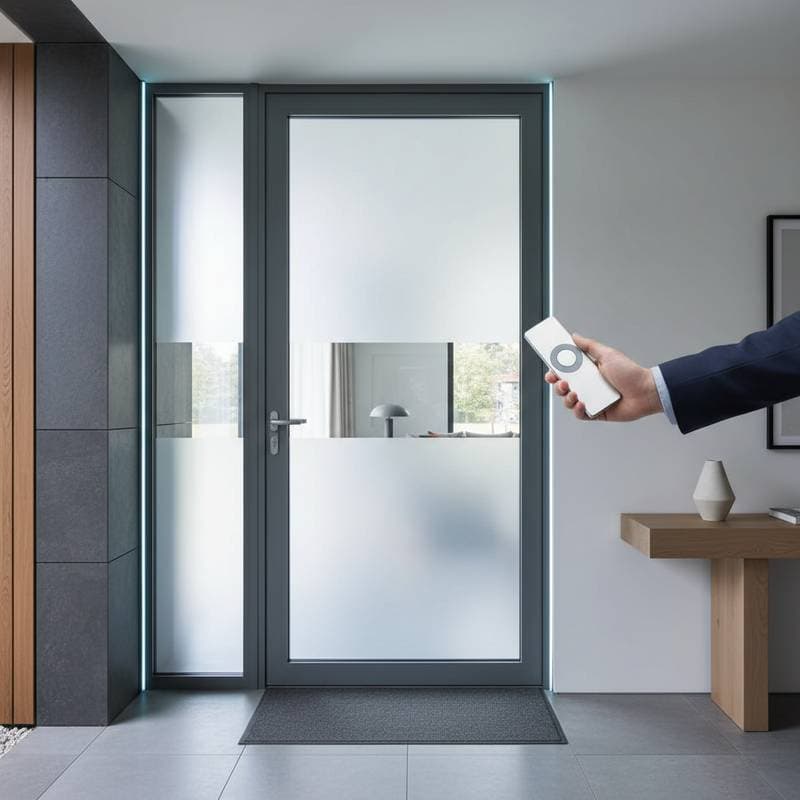The Shift from Barn Doors: Embracing Sleek Hardware and Refined Design
Sliding barn doors transformed interior design with their rustic appeal and practical utility. They added texture, warmth, and visual depth to open layouts. However, evolving preferences now highlight drawbacks such as prominent tracks, audible rollers, and reduced privacy. Homeowners increasingly select pocket doors, flush tracks, and understated hardware that deliver superior performance with minimal maintenance.
This evolution refines the integration of doors into living spaces rather than discarding proven concepts. Contemporary interior doors emphasize silent operation, precise details, and seamless alignment with architecture. Sliding mechanisms remain popular, yet users demand slim silhouettes, fluid motion, and finishes that harmonize with modern environments.
Practical Ways to Achieve This Aesthetic
Budget-Friendly Option ($600 - $1,200)
- Install prefinished hollow-core pocket doors paired with standard aluminum track sets.
- Incorporate slender pulls in brushed nickel or matte black to maintain a streamlined appearance.
- Match the door color to surrounding walls for a near-invisible effect.
Mid-Tier Option ($1,300 - $2,800)
- Select solid-core doors to improve acoustics and provide a weightier presence.
- Integrate soft-close pocket hardware for reliable, gentle operation.
- Use low-profile trim or recessed jambs to form a flush installation.
Premium Option ($3,000 - $6,000)
- Opt for bespoke wood or glass pocket doors featuring hidden track mechanisms.
- Include touch-latch systems or automated operators for convenient access.
- Blend door elements with custom millwork to create uninterrupted wall surfaces.
These approaches align with a cohesive design ethos, varying in execution quality and longevity. Greater investment yields quieter mechanics and smoother surface transitions.
Understanding Maintenance Demands
Barn doors appear straightforward until routine care reveals challenges. Visible tracks accumulate debris, while rollers demand frequent tuning to avoid noise or misalignment. Rustic woods common in these designs warp under humidity, leading to privacy leaks and diminished soundproofing.
Pocket and flush track configurations minimize exposed elements. Enclosed components simplify dusting, and structural integration reduces adjustment needs. Routine tasks involve periodic roller lubrication and soft-close inspections.
Owners in variable climates must schedule annual reviews for material shifts due to expansion. For wooden surfaces, apply a thin layer of wax or polish yearly to preserve sheen without hindering glide.
Concealed Hardware's Ascendancy: Subtle Sophistication in Action
Transitioning from barn doors to hidden systems transcends mere style updates. It embodies a value placed on unobtrusive excellence. Users regard seamless mechanics as integral to overall design merit. Effortless rollers, hushed closers, and concealed guides enhance routine interactions.
Hardware selections mirror this subtlety. Designers favor enduring options like satin black, patinated brass, or brushed stainless over flashy or coarse alternatives. These choices develop character over time and adapt to diverse color schemes, fostering purposeful rather than prominent aesthetics.
Harmonizing Colors and Styles
Minimalist door setups require careful tonal alignment. Subdued contrasts and neutral layers prevail over bold statements. Consider these palettes for balanced results:
- Gentle Neutrals: Pair warm white walls with light oak doors and brushed nickel accents.
- Contemporary Monochrome: Combine charcoal doors, ebony trim, and stainless pulls.
- Organic Accents: Set walnut or ash doors against white walls with satin brass hardware.
- Subdued Industrial: Match gray walls to graphite doors and bronze fittings.
- Nordic Serenity: Use pale wood doors, matte white surrounds, and muted gray metals.
Uniformity in window casings, handles, and fixtures amplifies intentional cohesion. Shared hues and scales unify the environment.
Navigating Costs for Contemporary Systems
Assumptions that sleek designs demand high custom costs no longer hold. Pre-engineered kits for pocket frames and tracks now support standard dimensions, available at supply outlets. These enable the aesthetic without extensive alterations.
For constrained funds, low-profile surface tracks finished to blend with walls approximate concealment. Focus on durable rollers and damping features, as glide precision outweighs ornamentation. Quality motion elevates satisfaction beyond surface appeal.
Full integrations necessitate framing modifications and skilled carpentry. Such commitments yield invisible operations and sustained worth.
Integrating Seamless Solutions
The decline of barn doors refines rather than rejects sliding utility. It promotes hushed, intelligent space division. Flush track systems embed motion within structure, avoiding ornamental excess.
These doors retain spatial efficiency while curbing disturbances. They quiet environments, unify surfaces, and remove obtrusive hardware. Selecting apt materials, anticipating setup needs, and weighing upkeep against style ensures lasting appeal. Enduring designs integrate quietly into daily life.






